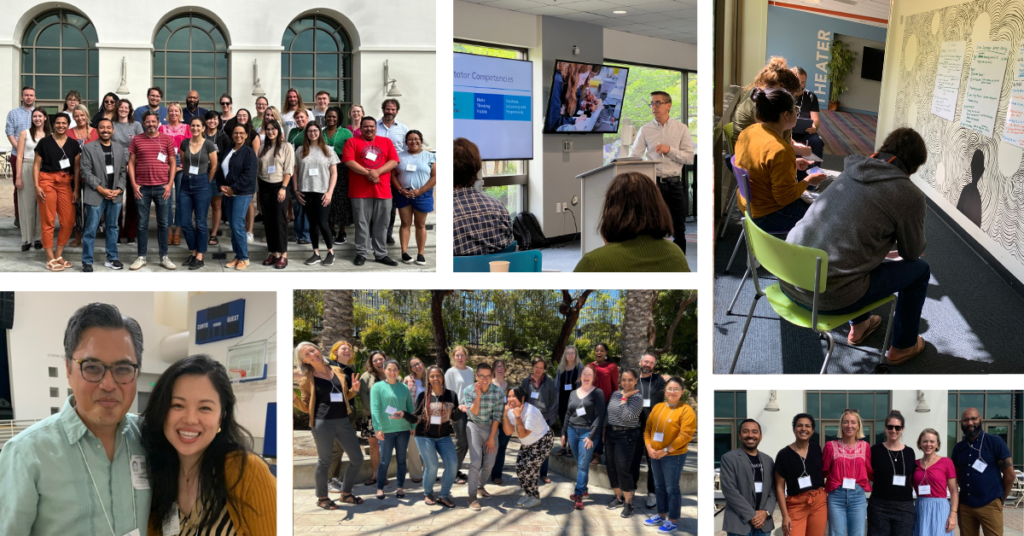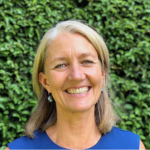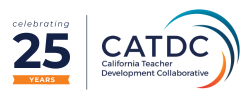3 Core Strategies for More Impactful Gatherings

I spent much of the summer immersed in professional development with California educators as Executive Director of CATDC. I reveled in the opportunity to be a participant observer, witnessing months of planning come to exuberant life, soaking up what I could from the facilitators as well as the teachers and administrators in the room or on Zoom. I learned a great deal, more than I can possibly share here, but what feels most important to me at this post-pandemic, back-to-school juncture is the reaffirmation of some core beliefs and practices I have carried with me for a long time: as educators we are community builders and change makers. Whether leading teams of adults or teaching young people, it is essential to plan intentionally, honor each individual’s complex and multifaceted humanity, and reflect critically.
Plan intentionally
Several years ago, the CATDC team chose Priya Parker’s Art of Gathering, for our summer reading, one of my “go to’s” still for inspiration as well as practical approaches in creating effective and impactful meetings and workshops. As Parker says, the first step in convening people meaningfully is committing to a “bold, sharp purpose.” Dig deeply into defining that purpose for yourself, whether planning an all-school assembly, a department meeting, or a math class; then communicate clearly what you are doing and why you are doing it. What core values, critical understandings, or strategic initiatives are at the heart of your coming together? What are your hoped-for outcomes? As consultants Eric Hudson and Kawai Lai reminded us at our leadership-focused programs this summer, be sure to make the implicit, explicit.
Sam Kaner, co-author of “The Facilitator’s Guide to Inclusive Decision Making,” an excellent resource for anyone leading meetings with adults or young people, says that determining the desired outcomes can often be the most difficult task, especially distinguishing between the overall goal for a topic and the meeting goal. This aligns with the different approaches teachers must attend to as they consider curriculum, unit, and classroom goals and throughlines. Planning frameworks that support the best teaching and learning can be found in Teaching for Understanding, Backward Design and Universal Design for Learning, cornerstones of CATDC’s Teaching Foundations program and vital guides for teachers at every stage of their careers.
Center the multifaceted humanity of your participants
Along with determining “the why” of your gathering and planning intentionally “the what,” consider carefully “the who”: How can you support every individual in your gathering, meeting, and/or classroom, to feel seen, heard, and respected for the complicated and growing beings they are?
This summer, the CATDC team has been reading Susie Wise’s Design for Belonging: How to Build Inclusion and Collaboration in Your Communities. We have heard a lot about belonging these past few years, and I appreciate Wise’s succinct and powerful definition: “Belonging is the invitation to be your full self, however that looks. It is the opportunity–no matter who you are–to learn, live and love, to be honored, encouraged, and allowed to develop as you and as part of the groups that develop and celebrate your identities, needs and contributions.” Building the trust and psychological safety essential for individuals and groups to thrive and accomplish their goals, especially within predominantly white institutions, takes more intentional planning. The Othering & Belonging Institute (OBI) recently published its own Belonging Design Principles, helpful to keep top of mind as you gather again. Also resonant to me as an introvert, and especially relevant as we continue to support anyone struggling with being all-the-time in-person is this MindShift podcast with strategies to honor and encourage the different ways introverts engage in learning.
Reflect critically and apply your learning
As John Dewey famously said, “we do not learn from experience, we learn from reflecting on experience.” Summer break provides the space for the kind of reflection essential to become more skilled and responsive teachers and leaders, but once the academic school year gets going, one must intentionally create space to pause and reflect, to make reflective practice a daily practice, as Sara Tahir of Global Online Academy enjoins. I loved the straightforward “Retrospective” activity from August Public shared by both Kawai Lai and Eric Hudson at CATDC Summer programs, featuring these three questions: What’s working? Where am I getting stuck? What should I do differently? Encouraging students to engage in this kind of reflective practice by offering such questions in an exit ticket can provide a boost to their learning and provide you with essential information as you plan forward. Change the pronoun to “we” and offer these three questions at the end of a team meeting to encourage reflection and also gather data about how you might reconnoiter in terms of goals or approaches. The Critical Friend Conversation Protocol is another structured approach for engaging with individuals or groups in the kind of reflection that can change practice.
Referencing The Skillful Teacher, Victor Cota, Director of Equity and Inclusion at St, Margaret’s Episcopal School and Teaching Foundations facilitator said, “Teachers are always learning; we are students of teaching.” I would add that the best leaders are students of leadership. I have heard from numerous educators that the start of this school year feels different, that the summer actually provided time for rest, reflection, and new learning. The energy will build these next few weeks as we gather again with warm welcomes and high aspirations. These core practices have the potential to help us sustain that warmth and meet our goals, supporting ongoing learning for ourselves, facilitating the most impactful learning for students, and creating the kind of environments where each individual in our community can thrive.

A lifelong educator of youth and adults, Lisa Haney believes deeply in the transformative power of education. She began her career focused on international and multicultural education, teaching in Japan, Mexico and Martinique before landing at the Athenian School in Danville, California. In her 25 years at Athenian she served in many roles, including international program director, literature teacher, and humanities department chair, before becoming dean of faculty development and a member of the leadership team. Beyond Athenian, Lisa has engaged in teacher education through UC Berkeley Extension, as well as the Berkeley and San Francisco Unified School Districts, and was selected for a year-long fellowship by the US State Department in 2006 to support teacher development in Tanzania. Lisa holds a B.A. in English from the University of California, Berkeley and a M.A.T. from the School for International Training, Vermont. Lisa is incoming board chair at the Berkeley School and an enrolled student in a Masters/PhD program in community psychology at Pacifica Graduate Institute.
